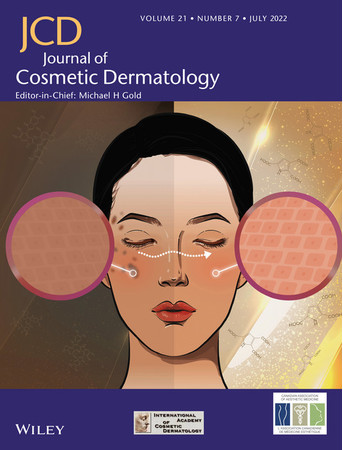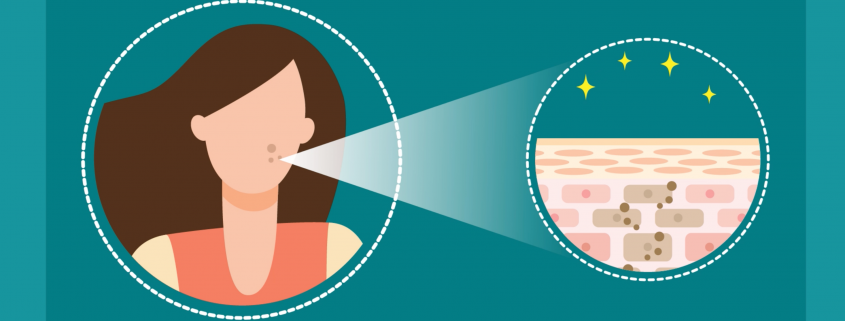Presented two academic papers at IFSCC 2022, cosmetic researchers conference held in London
/in Applied Research Human, Report /by mph_suzukiMediplus Pharma Corporation (CEO: Kenji Ito, Headquarters: Shibuya, Tokyo) presented two academic papers about ozonized glycerin , a novel glycerin compound, at the international cosmetics researchers conference, IFSCC 2022 @ London (International Federation of Societies of Cosmetic Chemists Annual Congress, September 19-22, 2022).
Read moreMediplus Pharma’s article “Ozonized glycerin (OG)-based cosmetic products lighten age spots on human facial skin” was accepted into the “Journal of Cosmetic Dermatology” and used as the journal cover
/in Applied Research Human, Report /by Mediplus PharmaCover page of the “Journal of Cosmetic Dermatology” (USA), an international academic journal of cosmetic dermatology and human clinical sciences.
Mediplus Pharma Inc. (Representative Director Kenji Ito, head office: Shibuya-ku, Tokyo) announces that the article on Mediplus Pharma’s patented ingredient: ozonized glycerin titled “Ozonized glycerin (OG)-based cosmetic products lighten age spots on human facial skin” was accepted into the American “Journal of Cosmetic Dermatology,” and used as the cover of the July 2022 issue of “Journal of Cosmetic Dermatology.”

The world’s leading academic journal on cosmetic dermatology「Journal of Cosmetic Dermatology」has accepted Mediplus Pharma’s article ” Ozonized glycerin (OG)-based cosmetic products lighten age spots on human facial skin“”
/in Applied Research Human, Report /by Mediplus PharmaMediplus Pharma is presenting posters at Society for Investigative Dermatology(SID)annual meeting 2022
/in Applied Research Human, Report /by Mediplus PharmaMediplus Pharma, Inc. (CEO: Kenji Ito, Head Office: Shibuya-ku, Tokyo,JAPAN) made a scientific presentation at the annual meeting of the Society for Investigative Dermatology (May 18-21, 2022, Portland, USA), which is considered the world’s highest-level society in dermatological research.
Title:Novel glycerin compounds improve skin health
Read moreNew ways to reduce facial age spots. Japanese Pharmaceutical R&D company Mediplus Pharma found the new ability of “High performance Glycerin” Effective in 92% of people after 8 weeks of continuous use.
/in Applied Research Human, Report /by Mediplus PharmaFOR IMMEDIATE RELEASE
Mediplus Pharma, Inc. (CEO: Kenji Ito, Head Office: Shibuya-ku, Tokyo,JAPAN) confirmed that cosmetics containing its patented ingredient, high performance ozonized glycerin, have the effect of reducing melanin (age spots) in the epidermis, and filed a new application patent which claimed melanin decomposition.
Read moreThe Effect of Ozone Gel on Bone Matrix Production by Human Osteosarcoma Cell Line Saos-2
/in Applied Research Human, Report /by Mediplus PharmaPao-Li Wang1)*, Yoichi Tachi2)*, Kazuya Masuno1), Nobutaka Okusa3) and Yasuhiro Imamura4)
1) Department of Innovation in Dental Education, Osaka Dental University, Osaka, Japan
2) Laboratory of Nutritional Physiology, Tokyo Kasei University, Tokyo, Japan
3) Department of Forensic Dentistry, Osaka Dental University, Osaka, Japan
4) Department of Dental Pharmacology, Matsumoto Dental University, Shiojiri, Japan
(Accepted for publication, April 20, 2018)
Abstract
Ozone is currently being considered as a potential oral antiseptic agent because it is highly antimicrobial and does not induce microbial resistance. In this study, we demonstrated that an optimal dosage of ozone gel enhanced the proliferation, type 1 collagen production, and alkaline phosphatase (ALP) secretion of Saos-2 cells in vitro. Proliferation of Saos-2 cells was assessed by MTT and DNA synthesis assays. Type 1 collagen production and ALP secretion were evaluated using enzymelinked immunosorbent assay (ELISA) and ALP assays. The cells were treated with/without 0.05, 0.5, 5 ppm ozone gel for 24 h. Ozone gel (0.5 ppm) signifi cantly induced the proliferation of Saos-2 cells. At this concentration, ozone gel enhanced type 1 collagen production and ALP secretion. The results indicated that ozone gel controls the cellular metabolism of osteoblasts, resulting in the secretion of early bone-related biomarkers.
Read moreThe Effect of Ozone on Collagen Type-1 and Inflammatory Cytokine Production in Human Gingival Fibroblasts
/in Academic Paper, Applied Research Human, Report /by Mediplus PharmaYoshimasa Makita1, Yasuhiro Imamura2, Kazuya Masuno3, Isao Tamura4, Shin-ichi Fujiwara1, Gotaro Shiota5, Akihiko Shiba6 and Pao-Li Wang7*
1Department of Chemistry, Osaka Dental University, Osaka, Japan
2Department of Pharmacology, Matsumoto Dental University, Nagano, Japan
3Department of Innovation in Dental Education, Osaka Dental University, Osaka, Japan
4Department of Oral Anatomy, Osaka Dental University, Osaka, Japan
5VMC Co., Ltd., Tokyo, Japan (currently Mediplas Pharmaceuticals)
6Department of Prosthodontics, Faculty of Dentistry, Showa University, Tokyo, Japan
7Department of Bacteriology, Osaka Dental University, Osaka, Japan
Abstract
Ozone is currently being considered as a possible oral antiseptic agent because it is strongly antimicrobial and does not induce microbial resistance. In the article, we examined the effects of ozone exposure on the production of collagen type-1 and inflammatory cytokines in primary human gingival fibroblasts (HGFs) in vitro using enzyme-linked immunosorbent assays. The addition of 0.5 ppm ozone significantly enhanced collagen type-1 production by HGFs within 24 h. Secretion of the pro-inflammatory cytokines interleukin-6 (IL-6) and IL-8 by HGFs treated with lipopolysaccharide decreased when ozone was present in the medium. Together, these results suggest that clinical use of ozone would facilitate the positive balance between HGF-mediated periodontal tissue maintenance
Read moreUse of Ozone Gel in Various Fields Including Atopic Dermatitis and Its Future Application in Dentistry
/in Applied Research Human, Report /by Mediplus PharmaBackground and Purpose:
In our country, it is estimated that approximately one in two people suffers from some form of allergy, with atopic dermatitis affecting about 10% of the population. Research into allergic diseases is gradually progressing, yet there are no complete preventive or curative treatments available. Current treatment primarily involves long-term symptomatic therapy through environmental management and pharmacotherapy with anti-inflammatory drugs. 1) Furthermore, it is also observed in the dentistry field with three-quarters of the population being said to be suffering from periodontal disease . The misuse of antibiotics, leading to multidrug-resistant bacteria, poses a significant social issue, and there are many cases where long-term antibiotic use is not feasible, especially in oral care. Both atopic dermatitis and periodontal disease are inflammatory diseases, and the long-term application of steroids as anti-inflammatory drugs has been problematic due to side effects like steroid-induced rosacea.
The 36th Japanese Nursing Association Compendium: “Deodorization effects of ozone products against unpleasant cancer odor.”
/in Applied Research Human, Report /by Mediplus PharmaAbstract:
The last stage of a human life is a crucial period for people and their family. Various approaches are being used to study the way people want to spend their last moments, including palliative care. In this study, we succeeded in drastically reducing the unpleasant cancer odor of a patient who had long been bothered by it by using ozone gel and ozone water. The treatment also cleansed the surface of the ulcer, suggesting that ozone gel might positively contribute to endstage medicine. This treatment suppressed the unpleasant odor and cleansed the patient’s body in her last stage, indicating that ozone gel might help people to spend their twilight years with dignity. With the hope of helping such patients, we intend to accelerate the development of medical products containing ozone gel and make them accessible as soon as possible. This case report summarizes an article presented at the 36th Japanese Nursing Association Compendium–General Nursing published by the Japanese Nursing Association on November 24, 2005.










